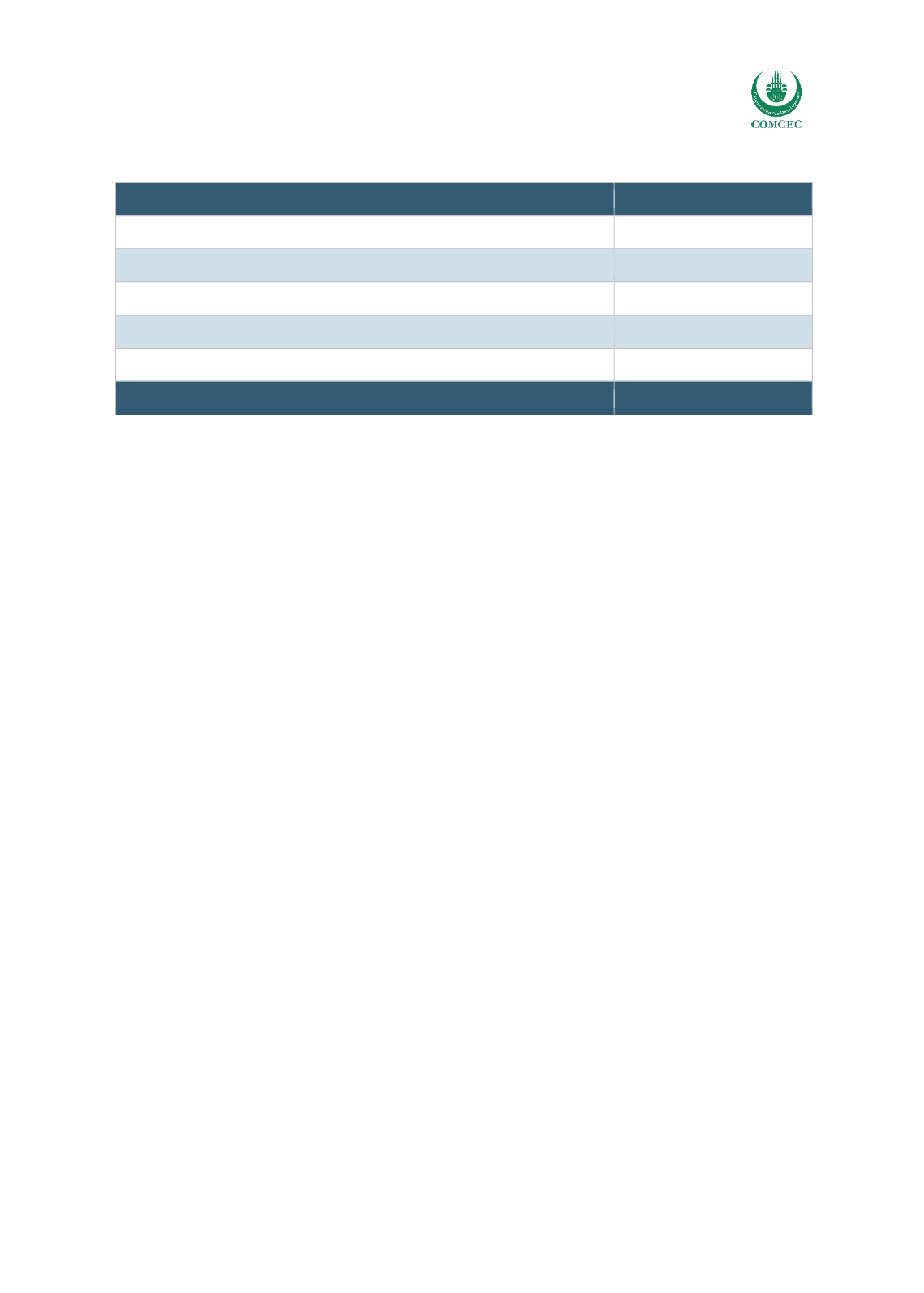

Reducing On-Farm Food Losses
In the OIC Member Countries
87
Table 3.19: Production of Pangasius and Tilapia in 2010
Island
Pangasius
Tilapia
Sumatra
97,000
204,100
Java
19,900
158,800
Kalimantan
23,500
24,800
Sulawesi
16,200
Other Provinces
7,500
50,300
Total
147,900
464,200
Source: MMAF (2011)
More recent reports show tilapia production in Indonesia has reached nearly 670,000 tonnes,
and in Egypt it has reached nearly 790,000 tonnes according to the World Aquaculture Society,
2013 (Fitzsimmons, et al., 2014). In Indonesia, tilapia is produced via cage culture, polyculture
and rice culture methods. The main exporter is Regal Springs, the world's largest tilapia
producer, which operates a large-scale integrated farm for the international market.
Indonesia has a multitude of marine and inland waterways suitable for aquaculture. Abuses such
as antibiotics in fish feed and the over-fertilization of marine waters, however, have brought the
industry into disrepute (WOR, 2012).
3.8.2. Assessment of On-Farm Losses and Economic Burden
Key informants in Indonesia visited several aquaculture farming operations in Eastern Java
during the analytical study to verify the literature review findings and determine whether on-
farm fish and shrimp losses were similar to those being reported by FISHSTAT. Their
observations and interviews indicated that on-far losses are very low, generally believed by
producers to be 5% or less. The aquaculture production practices in current use by moderate to
large sized operations are highly standardized and losses have been reduced via the
implementation of feeding and pest management practices. However, the lack of quality,
certified fry leads to low productivity and high feeding costs for shrimp and fish (CBI 2012).
Black Tiger brood stock are collected from the wild while Pacific White brood stock are mostly
imported from the Continental US, Hawaii, Taiwan or China. In these countries, hatcheries
specialize in producing Special Pathogen Free (SPF) brood stocks that are less disease-prone.
The quality of Pacific White shrimp seed varies widely. The main problem is that SPF brood
stocks are very expensive and many hatcheries therefore forego the higher quality from the US
and Hawaii to import cheaper variants, especially from China (CBI, 2012). Black Tiger shrimp
seeds are mostly produced by small-scale backyard hatcheries concentrated in specific regions
like Aceh in northern Sumatra. There have been many complaints about the quality of Black
















